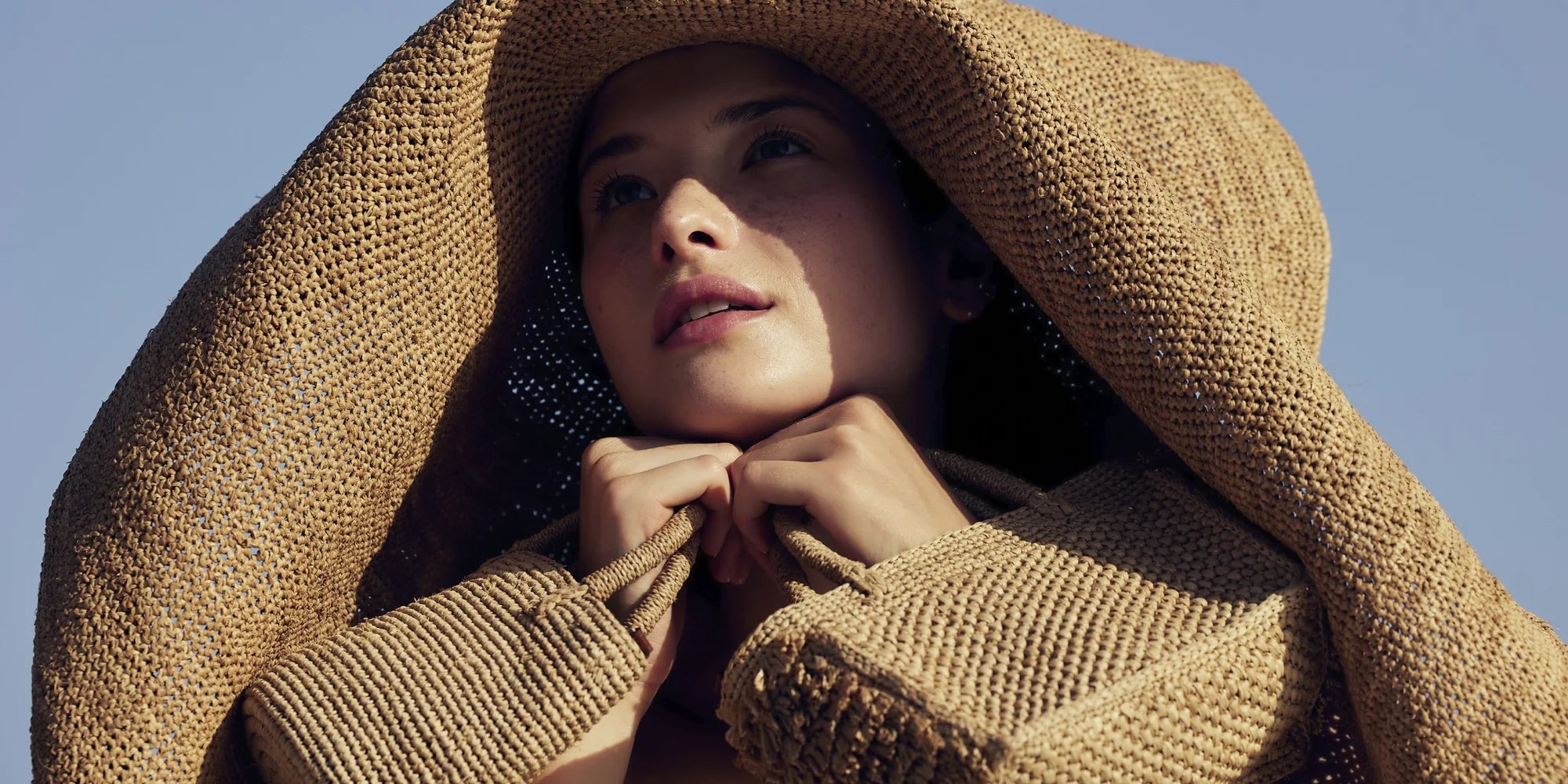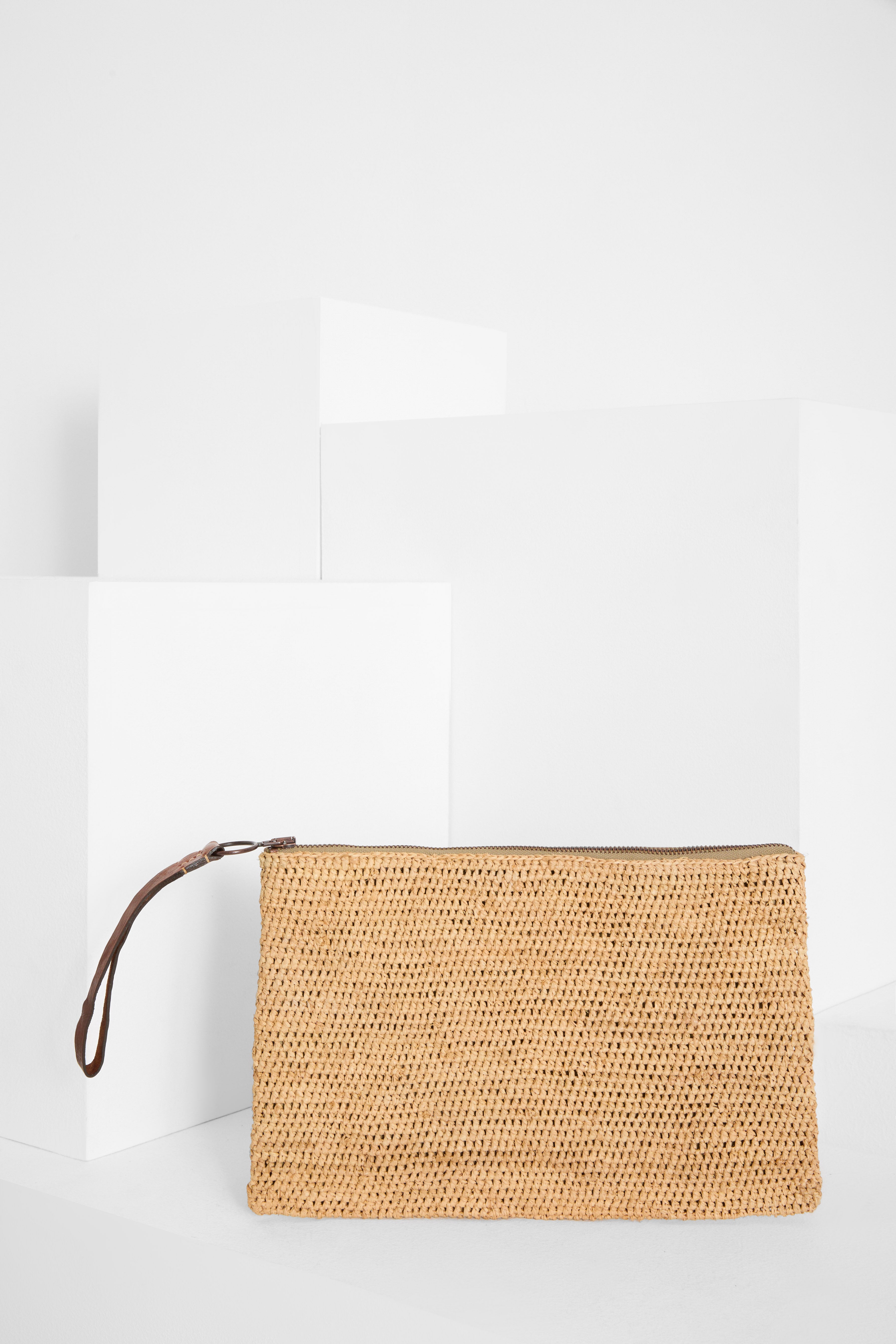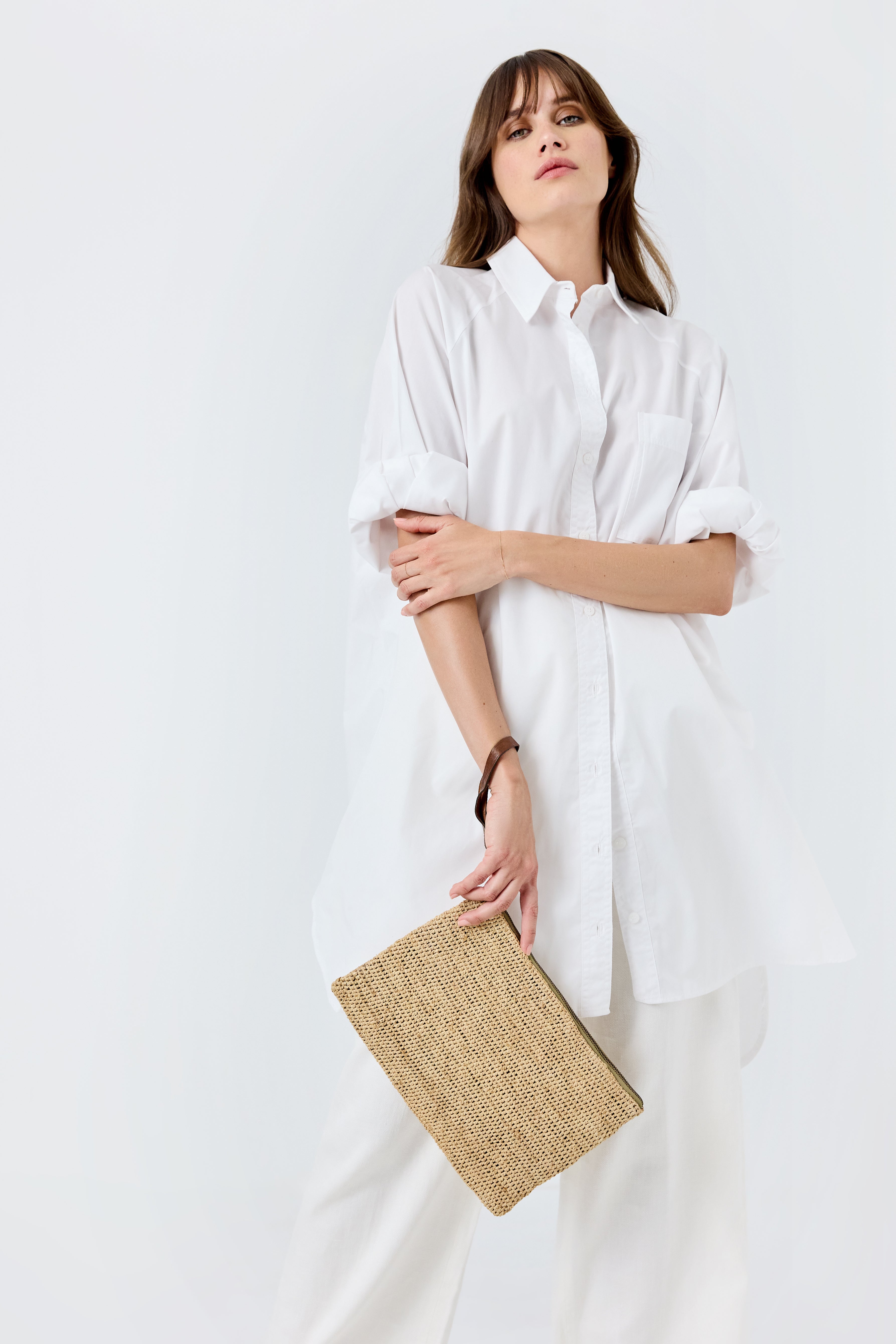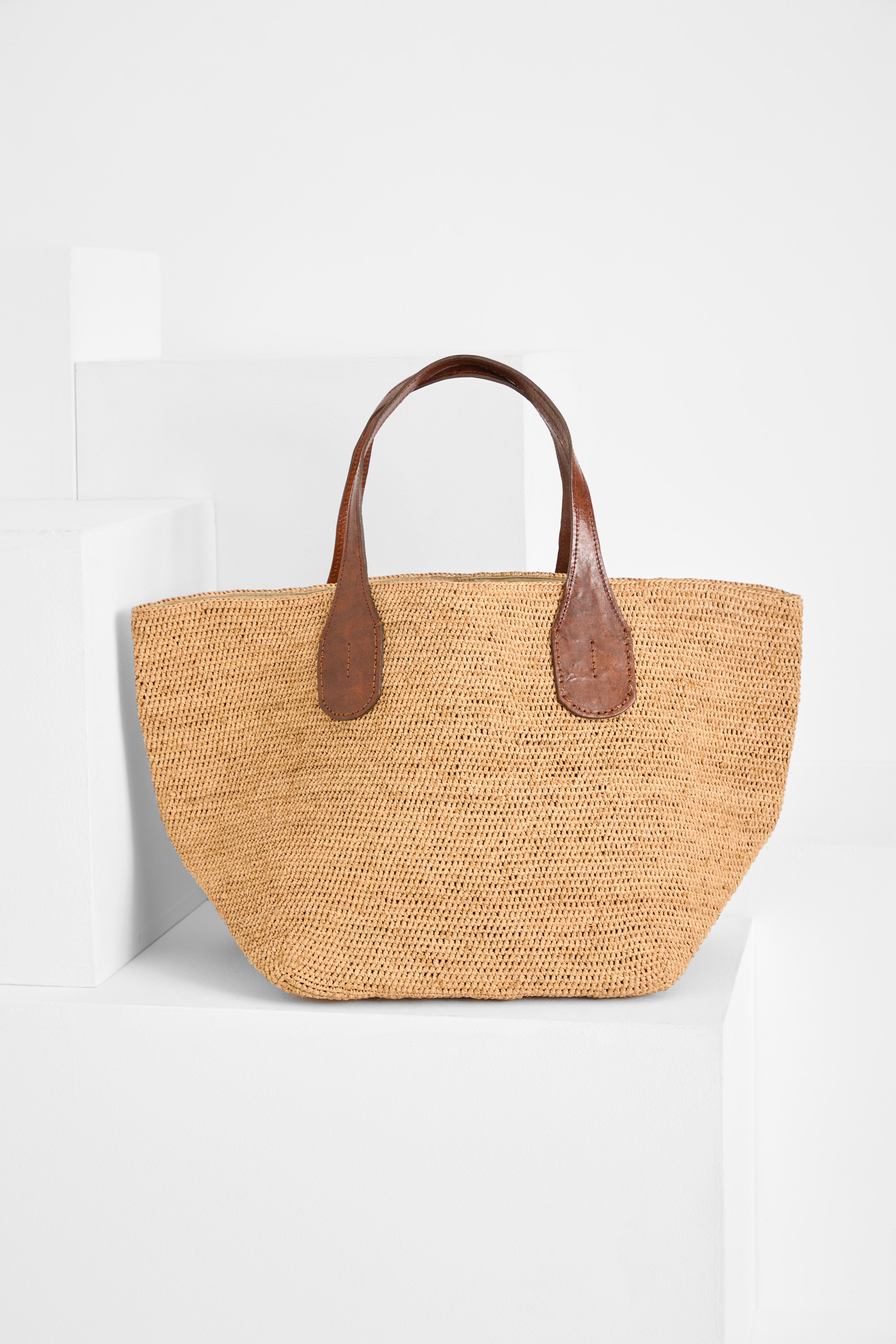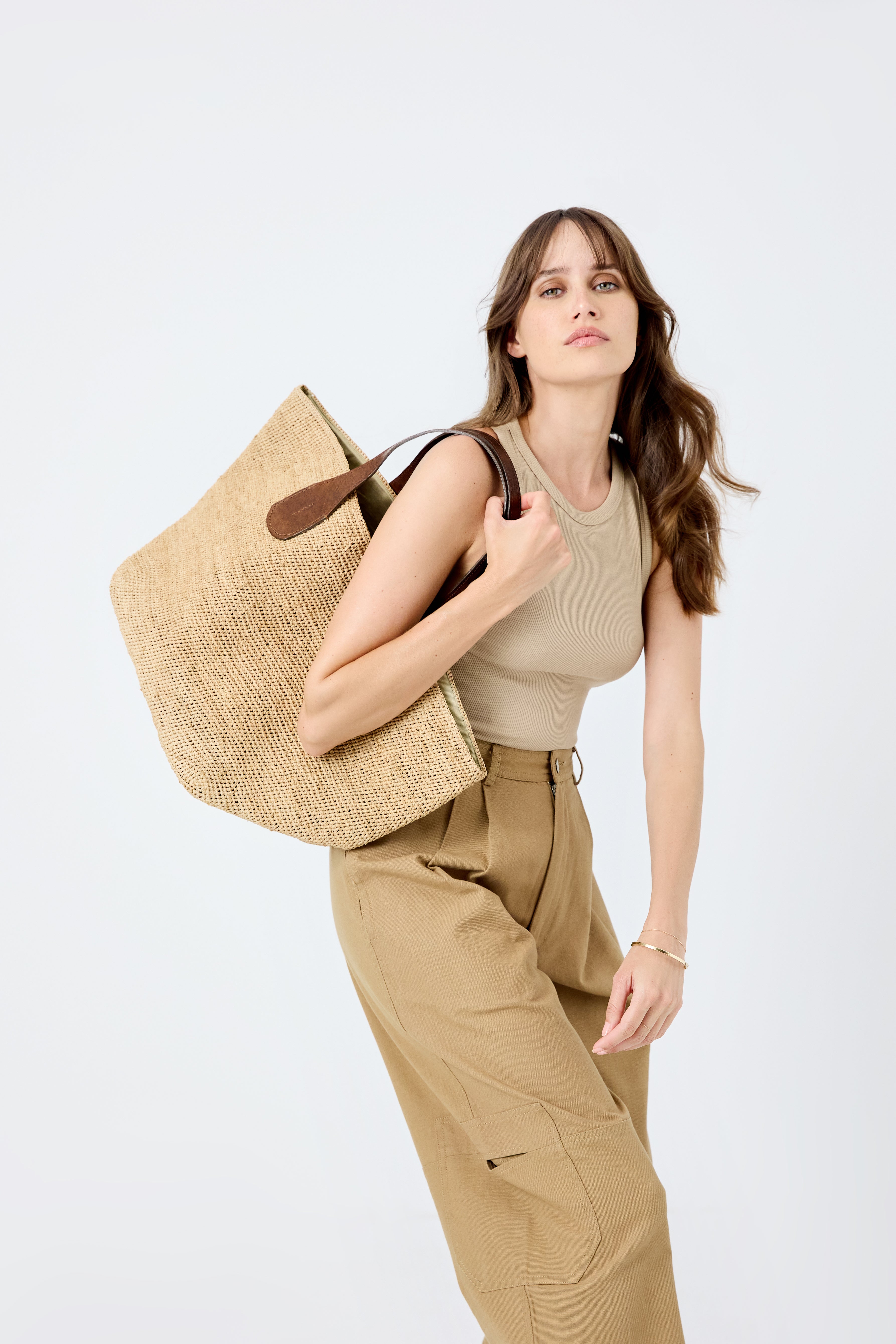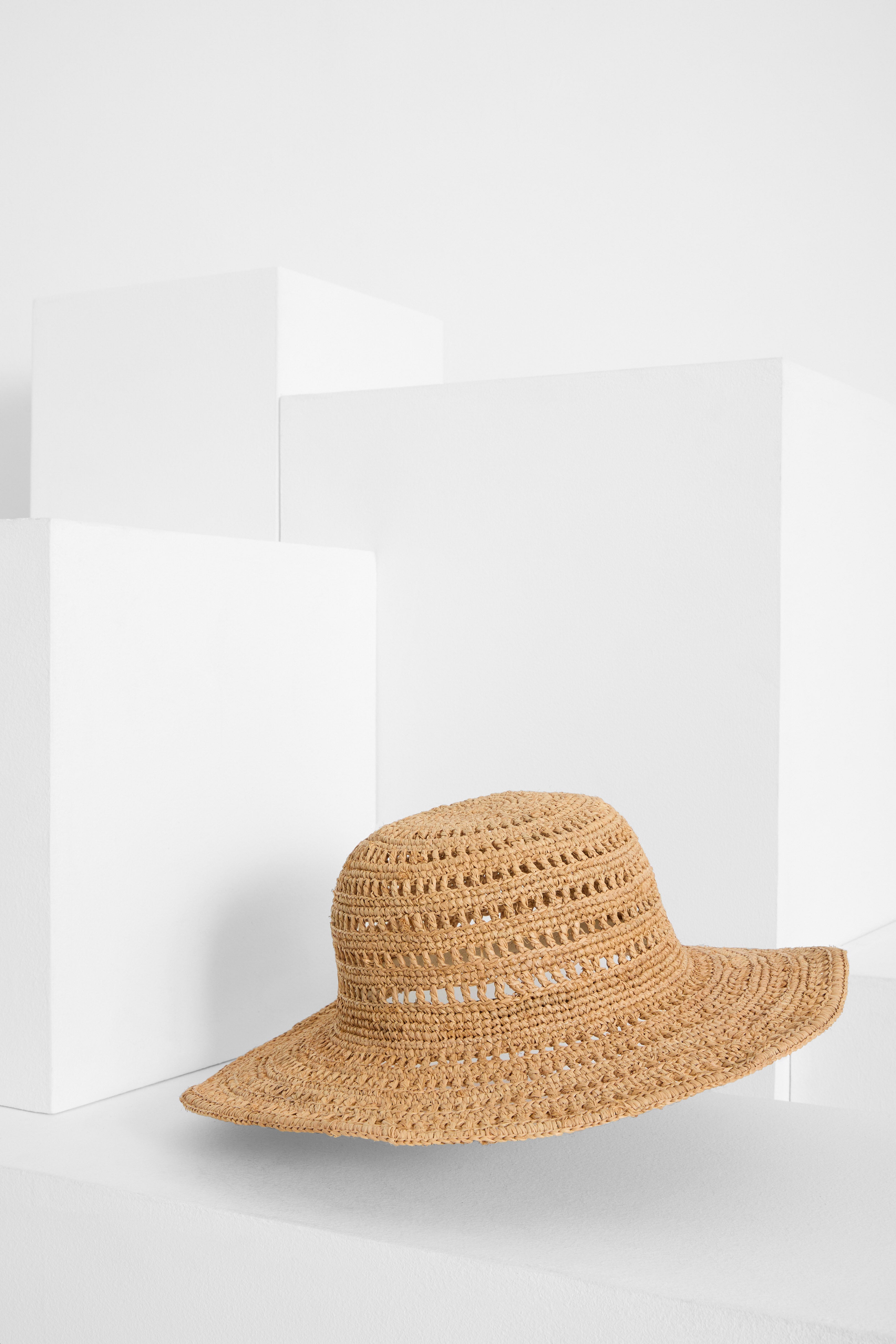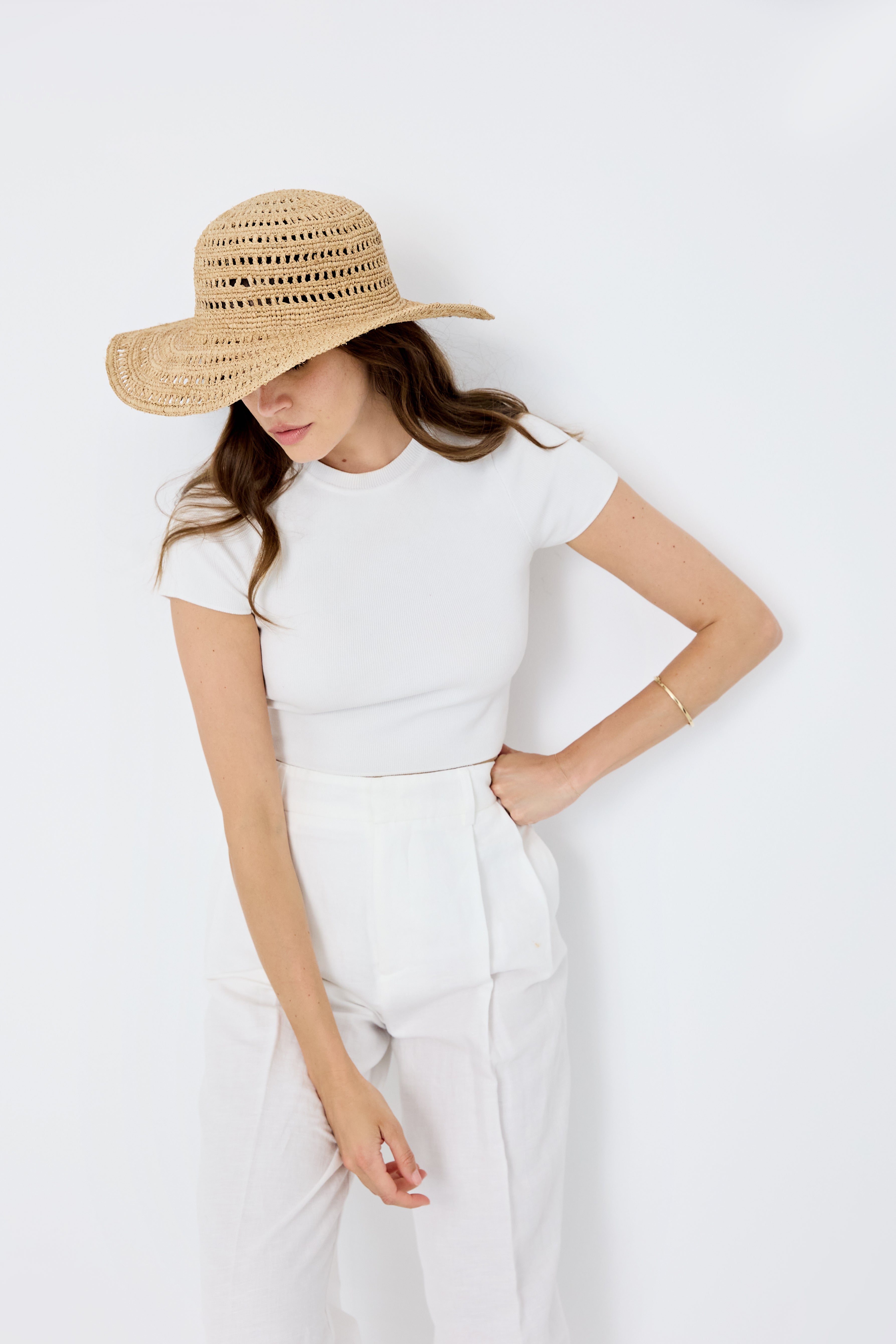@ibeliv_official
The differences between RAFFIA and straw: everything you need to know
Are you looking for fashion accessories made from natural raw materials? Not sure which raw material to choose? Straw and RAFFIA are two of the most popular materials for making bags, Clutches and hats from natural fibers. IBELIV gives you all the information you need to know about each material to help you make the right choice.
Origin of RAFFIA and straw
Before we talk about the know-how required to make products from RAFFIA or straw, let's take a moment to determine the origins of these two materials. As you'll see, every material has its surprises in store!
Natural RAFFIA : a material made from the leaves of Madagascan palm trees
There are many different species of natural RAFFIA . However, the RAFFIA species most commonly used to make fashion and home decoration products comes from Madagascar. This fiber is derived from the leaves of palm trees endemic to the island, which grow in humid areas. This product of nature is known to contain a natural resin that increases its longevity, flexibility and suppleness. The result: RAFFIA is a resilient material conducive to creative work.
So does RAFFIA come exclusively from nature? The answer to this question would have to be yes. Unfortunately, natural RAFFIA is not the only material used by fashion accessory designers. Let's get to the bottom of it!
Natural RAFFIA , reconstituted RAFFIA , synthetic RAFFIA : let's take stock!
There are many different types of RAFFIA on the fashion market. Don't confuse naturalRAFFIA , reconstituted RAFFIA and synthetic RAFFIA (often used by gardeners to support plants in the vegetable patch or garden). Only natural RAFFIA guarantees impeccable wear and an authentic look for your fashion accessories. Bonus:maintenance of a RAFFIA hat, like any other fashion accessory made from this natural fiber, is limited to the strict minimum.
To be sure that products bearing the RAFFIA label are actually made from natural RAFFIA , check the information supplied by the distributor. If you don't find any mention of natural RAFFIA , these products are probably made from reconstituted RAFFIA (wood and cotton fiber) or syntheticRAFFIA (plastic-based). At IBELIV, all our creations are guaranteed 100% natural Madagascan RAFFIA !
Straw: an overview of the main straws used in the fashion industry
Here again, there's straw and there's straw! Indeed, while the evocation of the traditional straw hat often brings to mind a beach accessory made from wheat straw, it's not necessarily this material that is used to design a modern straw hat in the fashion sector.
Straw, like RAFFIA, is a widely-used natural fiber. It is used to make a variety of objects, such as bags, decorative items and, of course, the famous straw hat. As we've just mentioned, straw is a material that comes from the dry stalks of cereals (most often wheat, but also rice, rye, corn, oats or barley). The quality of this fiber has a direct impact on the durability of the straw hat. While this rigid raw material is inexpensive and abundant, it does not offer the same level of quality as RAFFIA. A conventional straw hat absorbs moisture, can become brittle over time and its rigidity tends to limit creative work.
Focus on the different straws used to make accessories
Here is an overview of the most common straws and their characteristics:
- wheat straw, thick, rigid and coarse material;
- paper straw, artificial material often made from a mixture of paper and cotton or paper and polyester;
- rush straw, a light, stiff, green-coloured natural fibre often used to make inexpensive gardening hats;
- Milan straw, a raw material used in the weaving of traditional Milanese hats, often corresponds to a synthetic paper fiber.
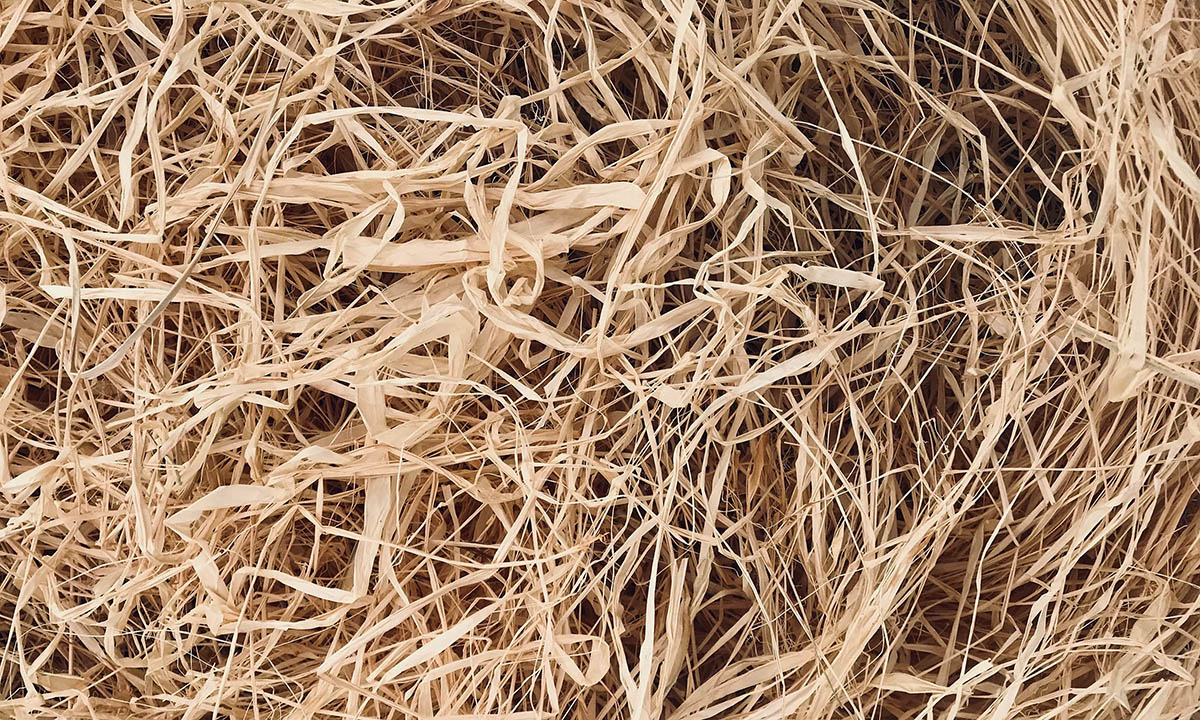
RAFFIA creations vs. straw creations: what are the differences between these products?
If you're looking for natural, authentic and versatile accessories, creations in natural RAFFIA are the way to go. In fact, they're a pleasure to use in all kinds of environments: beach, office, shopping, etc. The flexibility of this natural fiber makes it possible to crochet, by hand, products in a variety of styles and sizes to suit all outfits and activities. Specializing in natural RAFFIA accessories, IBELIV favors elegant, timeless and functional design. The result: versatile accessories that are comfortable to wear and contemporary in style. A result you'll find hard to achieve with straw creations, as this type of product is often reserved for casual vacation looks...
While it also has an authentic natural appearance, straw does not offer the same level of quality as RAFFIA in terms of durability, design and texture. Indeed, while natural RAFFIA is renowned for its robustness and longevity, straw tends to be more fragile when subjected to intensive use. On the aesthetic side, RAFFIA 's flexibility in weaving offers craftsmen the opportunity to create more elaborate designs. Finally, the texture of RAFFIA guarantees a softer feel than straw.
Now you can see why RAFFIA accessories have made it into the exclusive world of luxury fashion, unlike straw products!
At the heart of the manufacturing process: sustainability, ecology and ethics
Natural RAFFIA has the advantage of being a renewable, robust and biodegradable natural resource. At IBELIV, we use only high-quality, sustainable and ethical RAFFIA to make our bags, clutches and other products. Clutches and hats. A choice that guarantees our customers optimum resistance to daily wear and tear, as well asmore responsible consumption in both human and environmental terms! Here are a few useful points to check to ensure that your purchase contributes to respect for the environment and the well-being of the people involved in the manufacture of your accessories.
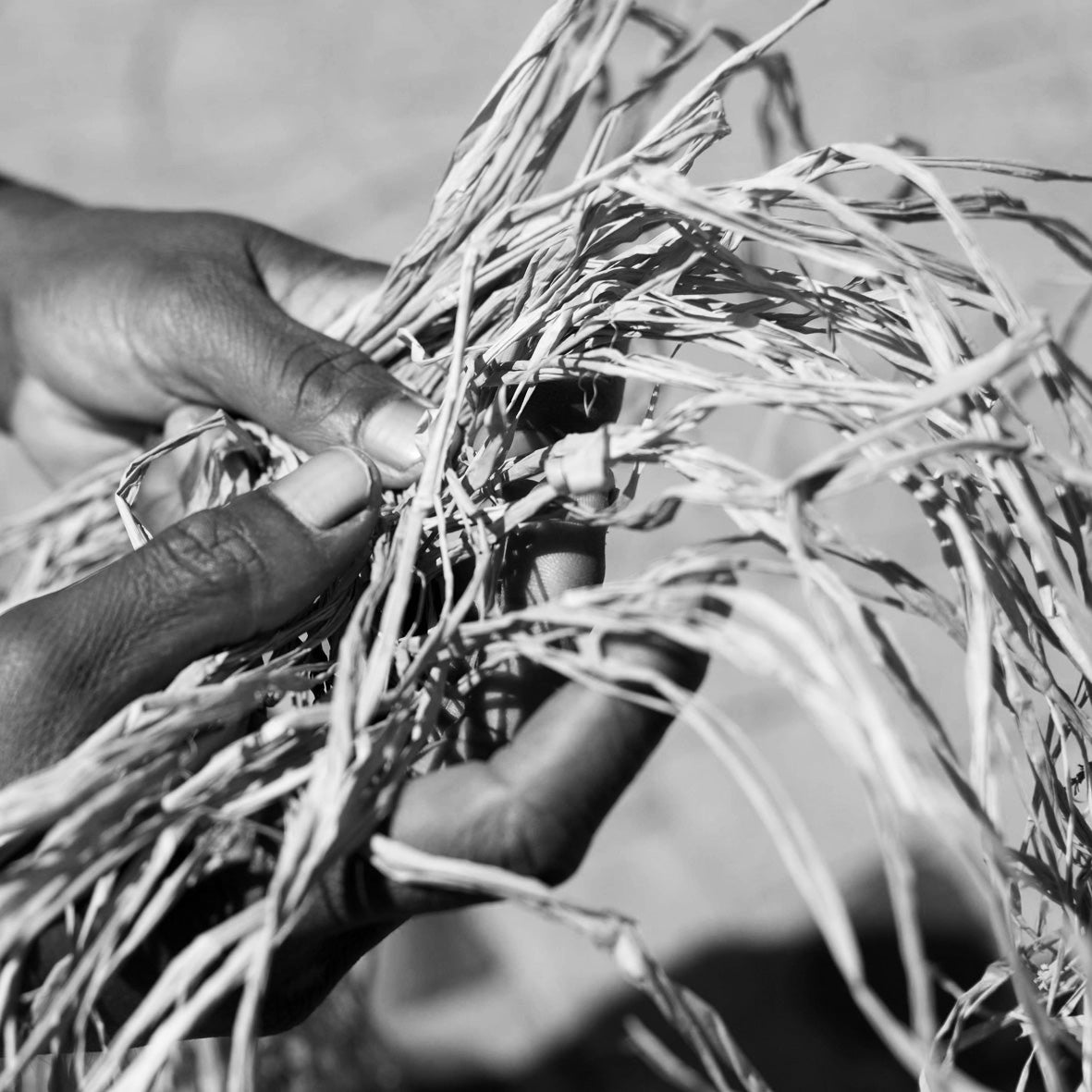
- Responsible harvesting: is the harvesting of the natural resources needed to manufacture our accessories carried out in an environmentally-friendly manner? For example, for RAFFIA, it is recommended to harvest only 30% of the tree's young shoots to guarantee optimal regrowth after cutting.
- Environmentally-friendly cultivation: does the plant used to design fashion products contribute to the balance of the ecosystem? RAFFIA is known as a soil-stabilizing plant in Madagascar.
- An industry synonymous with sustainable employment for the local population: does the creative work ensure sufficient income for the craftsman? IBELIV trains and employs RAFFIA women, who can earn a comfortable income by practicing a rewarding trade: the creation of exceptional hand-crocheted products.


